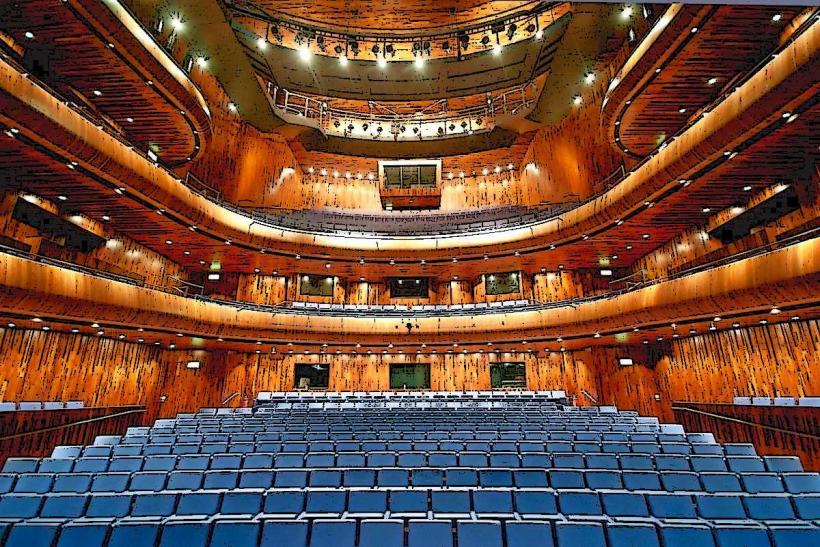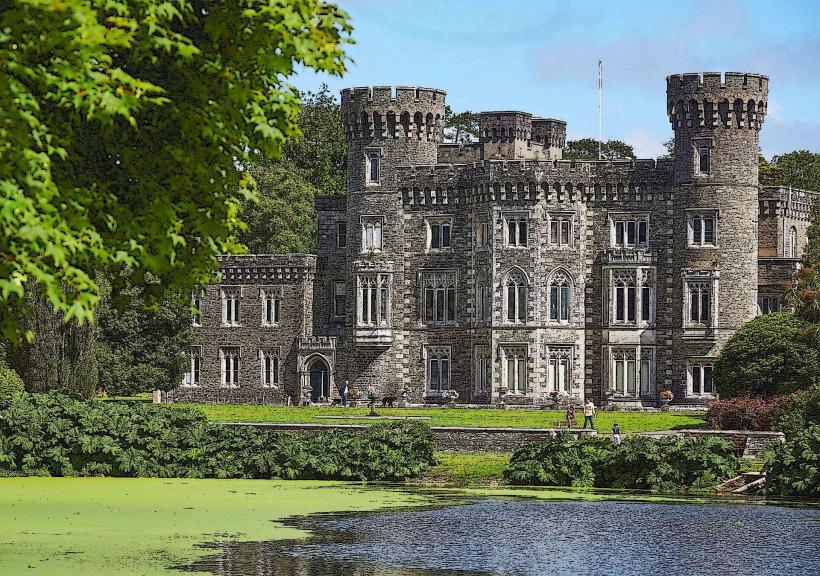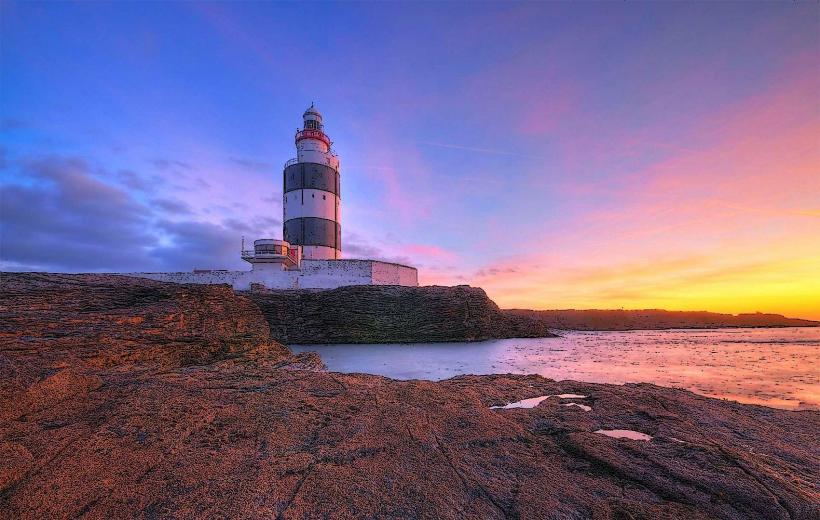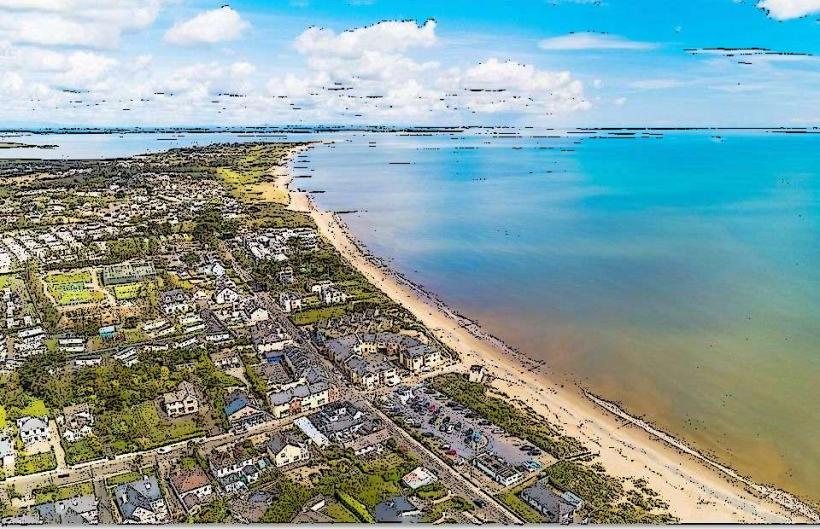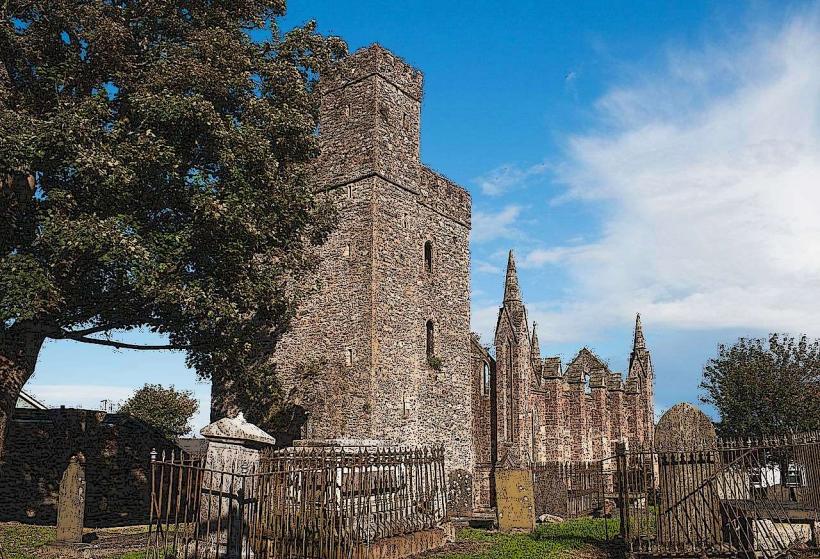Information
Landmark: Irish National Heritage ParkCity: Wexford
Country: Ireland
Continent: Europe
The Irish National Heritage Park is a unique open-air museum located in Ferrycarrig, County Wexford, Ireland. It offers visitors an immersive experience into Ireland’s rich archaeological and cultural history, spanning from the Stone Age to the Viking and medieval periods. The park is spread across 40 acres of scenic countryside, and it brings Ireland’s ancient past to life through its carefully recreated historical sites, exhibits, and guided tours.
1. Overview
- Location: The Irish National Heritage Park is situated just 5 kilometers south of Wexford Town, off the N11. The park is easy to reach by car, with ample parking available for visitors.
- History: The park was founded in 1987 to promote awareness and education about Ireland’s prehistoric and early historic past. It is one of the most important heritage sites in the country, providing an opportunity for both locals and tourists to explore the origins of Irish civilization. The park aims to preserve and present Ireland's historical and cultural legacy through authentic reconstructions of ancient structures and interactive exhibits.
2. History and Significance
The Irish National Heritage Park offers a journey through 9,000 years of Irish history, with exhibits that cover various aspects of the country’s past. Some of the key historical periods and themes that the park explores include:
- Prehistoric Ireland: The park begins its journey in the Stone Age, with reconstructions of ancient homes, burial mounds, and ceremonial sites that reflect early Irish life. Visitors can walk through crannógs (ancient lakeside dwellings) and neolithic tombs, learning about the rituals and daily life of the earliest Irish settlers.
- Celtic Ireland: Moving into the Iron Age, the park highlights the influence of the Celts in Ireland, with reconstructions of ringforts and ancient dwellings. The Celts were a key part of Irish identity, and the park delves into their agricultural, spiritual, and warrior traditions.
- Viking and Medieval Ireland: The park also explores the Viking and early medieval periods, with detailed recreations of Viking houses, monastic settlements, and early Christian sites. The Vikings played a major role in shaping Ireland’s landscape, both through their invasions and settlements, while the early Christian period saw the spread of monasticism, which greatly influenced Irish culture and education.
3. Main Features and Attractions
The park is designed as a self-guided tour through a series of historical reconstructions and themed areas, with helpful signage and informative displays at each site. Some of the most notable features of the park include:
- Neolithic House: One of the park's first reconstructed dwellings, this house provides insight into how early Irish people lived during the Stone Age. It features a thatched roof and stone walls, replicating the simple, yet effective, structures used by Ireland’s earliest farmers and hunters.
- Celtic Ringfort: A reconstruction of an Iron Age ringfort, a type of circular fortified settlement typically used by the Celts. These ringforts were surrounded by earthworks and ditches and were used as both homes and places of defense.
- Celtic Burial Mound: A passage tomb, modeled on the famous Newgrange in County Meath, this structure reflects the burial practices of the early Irish Celts. It offers visitors a glimpse into ancient Irish funerary traditions and beliefs about the afterlife.
- Viking House: A Viking longhouse, showing the type of dwelling used by the Norse settlers who arrived in Ireland during the 8th and 9th centuries. The Viking house features a central hearth and simple wooden walls, reflecting the basic, functional lifestyle of the Norse settlers.
- Monastic Site: A medieval monastic settlement, complete with a stone church and beehive huts, illustrates the early Christian period of Ireland. Monasteries were vital centers of learning, agriculture, and spiritual life during this time.
- Viking Ship: An example of a Viking longship, demonstrating the seafaring prowess of the Norse people and their ability to travel, trade, and raid along the coasts of Ireland.
- The Early Christian Village: A reproduction of an early Christian settlement, showcasing the homes and religious buildings from Ireland’s early medieval period. Visitors can explore a reconstructed church, monastic cells, and crosses associated with the spread of Christianity across the country.
- Towns of the Medieval Period: A series of small medieval-style structures representing a typical settlement of the Middle Ages, where trade, craftsmanship, and urban life flourished.
4. Guided Tours and Educational Programs
- Guided Tours: While the park can be explored at your own pace, guided tours are also available. Expert guides lead visitors through the historical sites, offering deeper insights into the historical periods, the lifestyle of the people of the time, and the significance of the reconstructions.
- School Programs: The Irish National Heritage Park also caters to educational groups, offering programs that bring history to life for school children. These interactive programs allow students to learn about Irish history in a hands-on way, often with opportunities to participate in activities like ancient cooking or crafts.
- Workshops: Throughout the year, the park hosts a variety of workshops, including those on ancient skills like flint knapping, woodworking, pottery, and cooking. These workshops provide a more in-depth experience and allow visitors to engage directly with historical practices.
5. Visitor Experience
- Interactive Exhibits: The park’s interactive nature sets it apart from many traditional museums. It’s designed for visitors of all ages to engage with the past, whether it’s by entering the Viking longhouse, walking through the Neolithic house, or watching demonstrations of ancient crafts.
- Family-Friendly: The park is very family-oriented, with plenty of space for children to explore and learn. Many exhibits are hands-on, allowing children to try their hand at stone carving, pottery making, or other ancient crafts, fostering both fun and education.
- Walking Trails: The park features several well-maintained walking trails that take visitors through the various historical sites, offering a mix of natural beauty and historical interest. The scenic woodland areas and river views enhance the experience, providing a relaxing atmosphere while discovering the history of the area.
6. Practical Information
- Opening Hours: The park is generally open year-round, though the hours may vary depending on the season. It's best to check the official website or contact the park directly for up-to-date information.
- Admission Fees: There is an admission fee for entry into the park, with discounts available for children, students, and seniors. The park also offers family passes, making it a more affordable option for larger groups.
- Accessibility: The park is accessible to visitors with disabilities, with paved paths and easy access to most of the exhibits. However, some of the historical sites may have uneven terrain, so visitors should be prepared for a mix of accessibility levels.
- Gift Shop and Café: The park has a gift shop where visitors can purchase souvenirs, books, and Irish heritage-themed products. There is also a café where visitors can enjoy light refreshments or a meal after their tour.
7. Conclusion
The Irish National Heritage Park offers an immersive, hands-on experience that brings Ireland’s history to life. Whether you’re interested in prehistoric Ireland, the rise of the Celts, or the impact of the Vikings and early Christianity, the park provides a comprehensive and engaging exploration of the country's rich heritage. It is a must-visit for anyone interested in Irish history, culture, and archaeology. With its scenic beauty, interactive exhibits, and educational programs, the park provides an enriching experience for visitors of all ages.

